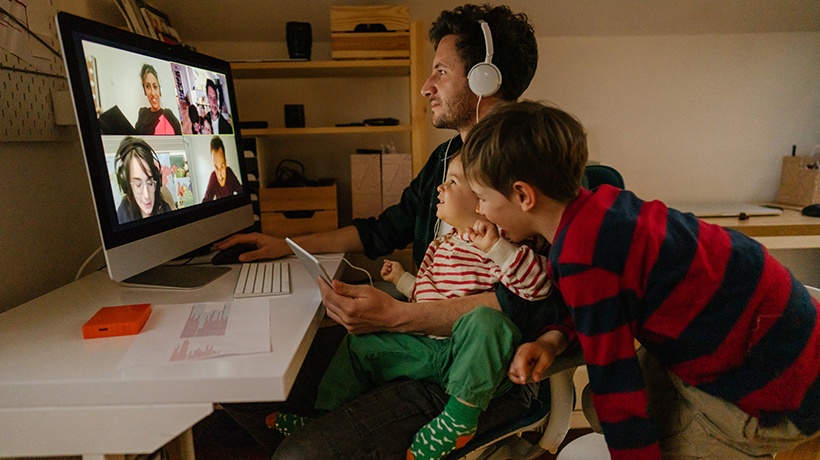How To Make The Home Learning Environment More Effective For Children
For school-aged families and teachers, this includes the format in which children are required to learn. From district to district, schedules have varied from fully remote to hybrid back to fully remote again. While this environment does teach children to be flexible and able to adapt to situations, it takes a toll on their ability to learn efficiently. To enhance remote learning and make the home environment more effective for children while reducing the burden on parents, we can offer some useful strategies.
5 Useful Remote Learning Strategies
1. Create A Dedicated Learning Space
First and foremost, a major key to successful remote learning is identifying a dedicated area conducive to learning, such as designating a space for remote learning with a desk. The ideal location is a space where the child has limited distractions and the parent can check on them periodically without interruption. Creating a learning space in which the student feels comfortable and can take ownership of their learning is extremely important. One of the goals here is to attempt to mimic the environment one would expect to see in a traditional classroom setting. Doing so not only aids them with their current remote learning challenges but also develops long-term study habits that will benefit them for years to come.
2. Make Organization A Priority
Now is the time to teach children the importance of organization and how many of their daily tasks can become easier by keeping things neat and tidy. The set-up should be similar to how a child’s desk appears in their school classroom, with any materials the child might need during lessons available within arm’s reach. Storing paper, notebooks, pencils, markers, and pens at their fingertips will help minimize distractions for your child during lessons. Having headphones accessible may also help a child stay more focused in class. Organization is key here. Be sure the child’s space is well organized and tidy. This not only helps them to thrive as they work to learn in a virtual environment but sets them up for the future with important life skills.
3. Create A Routine
Children thrive on routines and schedules in addition to knowing what to expect on a daily basis. The past year has asked nearly everyone to be incredibly flexible with their schedule. However, there are small steps you can take to help provide children with some comfort when it comes to scheduling. Keeping a schedule or a calendar that your child can easily access and read can help keep students on track, while also teaching them how to plan and organize their own work. Depending on your child’s age, you can assist them in setting up their planner or simply spot-check it from time to time to be sure it is complete. Either way, scheduling and planning are other critical life skills that can bring about a sense of comfort during challenging times.
4. Minimize Distraction
Because children can easily become distracted during remote lessons, minimizing distractions is essential to their success. Toys, games, and any electronics not needed for class should be put away during learning time. Students must understand that they need to stay engaged in the lesson, just as they would in school. In a very similar manner to setting up the child's workspace in a way that reflects what they would experience in school, any unnecessary objects that could become a distraction should be put away.
5. Communicate Often
The key to success in many things in life is communication. Checking in with your child when possible is a simple and effective tool for determining how the remote learning process is working for them. Touch base with them to see how they are handling the situation both educationally and mentally. Remote learning can be challenging to students who are accustomed to seeing their friends and teachers every day and who are now missing the social component of school. Encourage them to vocalize things that they are struggling with and things they find enjoyable. When checking in, make sure they are comfortable and make note if they require help keeping track of assignments.
Conclusion
Always remember, everyone is in this together! As a community, we are able to share in both the highs and the lows. Parents, teachers, and students are all on the same team striving to reach a common goal: providing the best possible education for the children. Keep an open line of communication with teachers, administrators, and, of course, your child. Similar to traditional education, not all children learn the same and not all children will thrive in the same environment. If you notice your child struggling or identify a problem, reach out to the teacher to make them aware of the issue. From there, it becomes easier to explore additional options which might be available to assist the child.
Most importantly, remember you are doing a wonderful job. A great deal of the responsibility of education has shifted onto the shoulders of parents and other family members. Feeling overwhelmed by the situation is very normal and something important to be aware of. Stay positive, hold your children accountable but also give plenty of praise and encouragement to your children while navigating the world of virtual learning.






![Experiential Learning Strategies For Enterprises: Building Real-World Experiences In Remote Learning Environments [eBook Launch]](https://cdn.elearningindustry.com/wp-content/uploads/2022/09/Shutterstock_1845419434.jpg)

